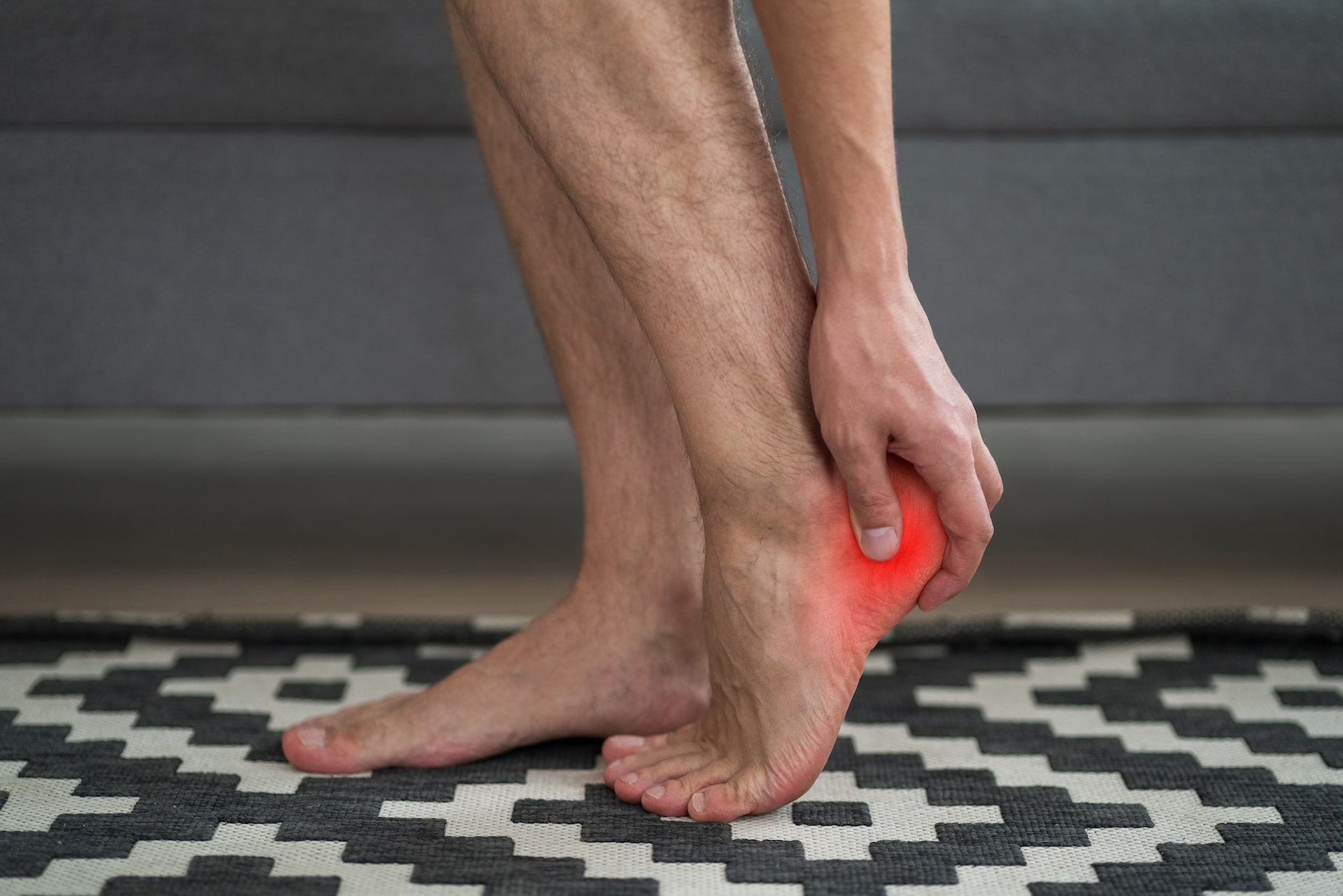1. Football
As a sport that revolves around physical contact as a crucial component of play, it’s not uncommon to see injuries occur, including foot and ankle injuries.
Common football injuries include:
- Sprained ankles. Running, cutting, and low tackles can tear ankle ligaments, resulting in a sprain. A sprained ankle is usually painful, swollen, bruised, and too weak to support weight.
- Take precautions to protect your ankle by developing proper running and cutting techniques, wrapping it properly if you don’t need to cut, and taking previous injuries into consideration by protecting those areas with extra support.
- Fractures. The bones in the foot — 26 of them — are delicate and can be fractured by a direct blow from a tackle or being stepped on by another athlete. Ankles are also susceptible to fractures. Fractures are typically painful, bruised, and swollen — ankle sprains and fractures are often confused with each other, so it’s important to see your podiatrist with these symptoms.
- Protect your feet from fractures by wearing properly protective footwear, and wrapping your feet according to the instructions of your trainer or podiatrist. Take extra care to protect previously injured bones.
- Contusions. A direct hit to your foot or ankle can result in bone bruising instead of a fracture. Although less severe than a fracture, a contusion is still painful. It is identified by pain, swelling, and discoloration. An examination from your podiatrist will determine if your injury is a contusion instead of a fracture.
2. Baseball
The average length of a baseball game is about three hours. That’s a lot of playing time with potential for injury to occur!
Common baseball injuries include:
- Sprains and fractures. Accidents while running, such as rolling your ankle, can lead to a sprained ankle. Additionally, sliding into the base can lead to physical contact with another player resulting in a serious fracture.
- Develop proper running, sliding, and fielding techniques in practice to decrease your chances of injury, and, if on base, avoid placing your foot directly in the path of a runner!
- Plantar fasciitis. Excessive running, especially on that hard dirt diamond, can stress your tendons, leading to plantar fasciitis. This injury is usually identified by a stabbing pain near the heel of your foot.
- Prevent plantar fasciitis by investing in proper footwear and inserts matching your foot type. Give yourself proper rest if you notice your foot is starting to feel stressed.
- Neuromas. Running in baseball cleats can strain the forefoot and lead to a neuroma. This is characterized by a hard, painful lump on the bottom of your foot between the third and fourth toes, often described as feeling like stepping on a marble.
- Take measures to prevent neuromas by having your cleats properly fitted, wearing proper inserts, and stretching and warming-up thoroughly.
3. Basketball
Basketball players spend a lot of time moving with little rest. Constantly running, cutting, and jumping can lead to foot injury.
Common basketball injuries include:
- Sprained ankles. Running, cutting, starting and stopping quickly, and repeatedly jumping on a hard surface put you at risk for sprained ankles.
- Prevent ankle sprains by wearing properly fitting high-topped basketball shoes. Use an ankle brace for additional support, especially if you’ve had a previous injury.
- Plantar fasciitis. Running a lot on a hard surface, such as the basketball court, commonly leads to plantar fasciitis often called basketball heel by athletes.
- Steps for preventing plantar fasciitis include warming-up and stretching properly, wearing properly fitted shoes, and taking breaks if you notice your foot is feeling stressed.
- Stress fractures. Sudden, forceful impacts of the feet, especially on hard surfaces, can create enough pressure to cause tiny cracks in the bones of your feet or ankles to develop.
- Prevent stress fractures by wearing properly fitted shoes (hopefully you’re seeing how important this is), developing good running technique (don’t smack your feet on the ground), and taking frequent breaks.
4. Soccer
This sport is basically all feet, so it’s pretty easy to expect foot and ankle injuries to occur, but they can be prevented!
Common soccer injuries include:
- Sprained ankles. Running, cutting, kicking, collisions, and mishandling the ball can lead to you rolling your ankle and spraining it.
- Practice proper running, kicking, and dribbling techniques to avoid ankle sprains.
- Fractures. Slide tackles — especially if you’re hit by the spikes of the cleats — and serious ankle rolls can cause a bone in your foot or ankle to fracture.
- Pay attention on the field and avoid letting a slide tackle hit you in your foot or ankle as a precaution against fractures.
- Achilles tendonitis. Constant running, especially over the long distances of a soccer pitch, can strain the tendons in your feet and ankles. Achilles tendonitis is the inflammation of the tendon on the back of your ankle just above your heel. It is characterized by swelling and painful lump.
- Prevent tendonitis by wearing properly fitted footwear, training within your limits (don’t overexert yourself if your ankles are feeling stressed, and stretching and warming-up thoroughly
Have you hurt your feet during physical activity? Find out what’s causing your pain and get relief from a skilled podiatrist at Kansas City Foot Specialists. Call us at (913) 338-4440, or contact us online.



